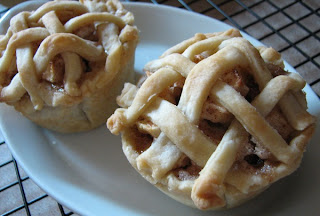Peruse salad recipes and you’ll find butternut squash paired with strong, savory flavors that play against its inherent sweetness: onion, garlic, mustard, arugula, vinegar, olives, Roquefort cheese, feta. With a couple of large squash from the CSA, I tried out a pair of salad recipes that, despite some ingredients in common, have very different flavor profiles. Either of these recipes makes a hearty side dish or light stand-alone entree, with nary a leaf of iceberg in sight.
Roasted Butternut Squash Salad Variations
Preparation Step
Preparation Step
1 medium butternut squash (2 to 3 pounds), peeled, seeded, and cut into 1-inch chunks
2 cloves garlic, minced
2 tablespoons olive oil
2 cloves garlic, minced
2 tablespoons olive oil
Preheat your oven to 425°F. Toss together the squash, garlic, and olive oil in a large bowl. Spread the mixture out onto a large baking sheet (use two, if necessary, to not crowd the squash pieces) and sprinkle with salt and pepper. Roast the squash for about 25 minutes, flipping the pieces about halfway through the cooking time, until the squash is soft and just beginning to caramelize. If you are using two baking trays, switch their position in the oven midway through cooking. Take care to not overcook the squash or the cubes will collapse when they are tossed with the other salad ingredients. Remove the squash from the oven and let cool.
(Adapted from Smitten Kitchen, by way of earlier adaptations. The tahini dressing is also wonderful on falafel.)
For the Salad
Roasted cubes from a 3-pound squash (as described above)
One 15-ounce can chickpeas, drained and rinsed (about 2 cups)
1/2 cup finely chopped red onion
1/4 cup chopped parsley
For the Dressing
1 clove garlic, finely minced
Pinch salt
1/4 cup fresh lemon juice
3 Tbsp tahini
3 Tbsp water
2 Tbsp olive oil
Combine the squash, chickpeas, onion, and parsley in a large salad bowl.
Whisk together the garlic, salt, and lemon juice in a small bowl. Add the tahini, water, and olive oil, blending well with each addition. Adjust seasoning to taste. Dress the salad, tossing carefully, or serve the dressing on the side (my preference).
Variation 2: Roasted Squash and Black Bean Salad With Spicy Chipotle Dressing
(Adapted from My Pantry Shelf. To beef up the salad (so to speak), garnish it with feta cheese.)
For the Salad
Roasted cubes from a 3-pound squash (as described above)
One 15-ounce can black beans, drained and rinsed (about 2 cups)
1/2 cup finely chopped red onion
2 Tbsp parsley or cilantro (optional)
One 15-ounce can black beans, drained and rinsed (about 2 cups)
1/2 cup finely chopped red onion
2 Tbsp parsley or cilantro (optional)
For the Dressing
1/4 cup canola oil
2 garlic cloves, peeled
1/3 cup lime juice
1 Tablespoon honey
1 chipotle chili in adobo
1/2 teaspoon salt
In a small saucepan, heat the oil and cloves of garlic over medium heat just until the garlic begins to brown. Cool slightly. In a blender container, combine the oil and garlic with all of the remaining dressing ingredients. Blend until smooth. Spoon a couple of tablespoons of dressing over the salad and toss carefully. Serve salad with remaining dressing on the side.





